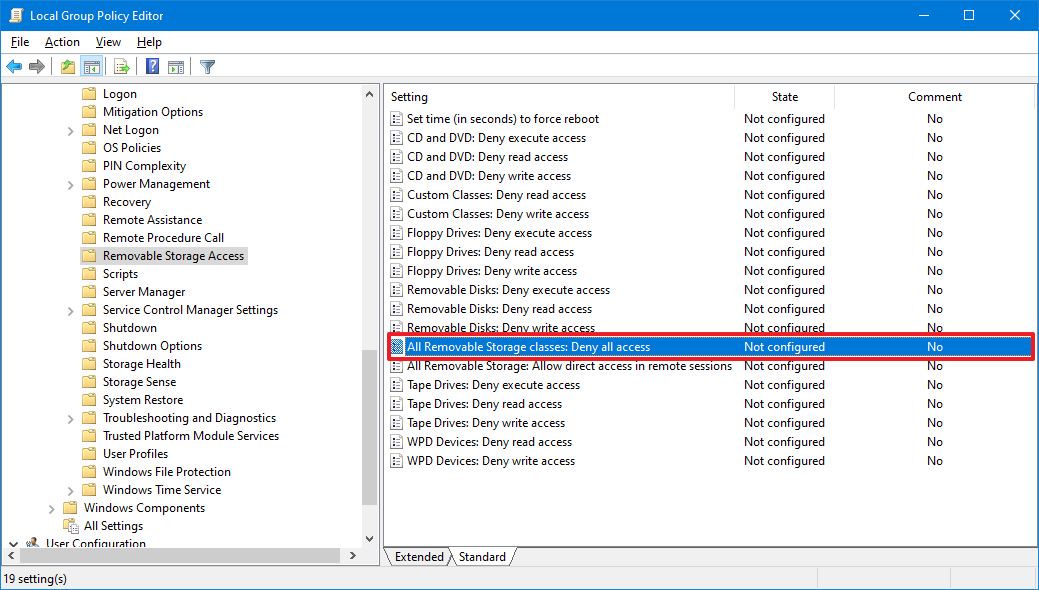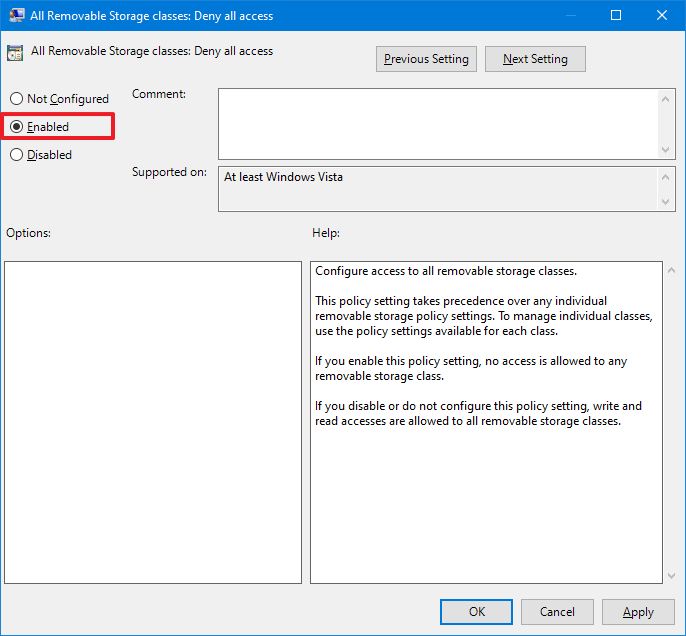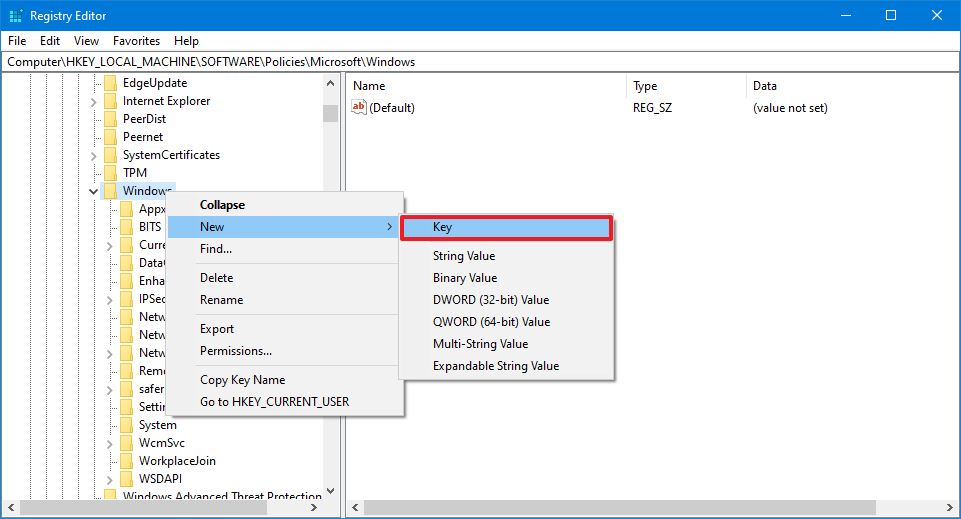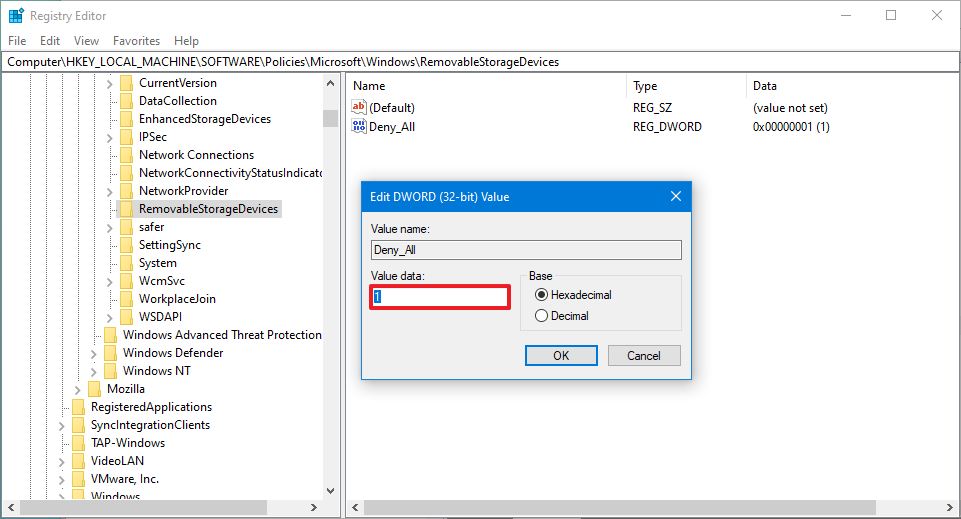How to disable access to removable storage devices on Windows 10
Yes, you can restrict access for all removable storage drives on your PC, and in this guide, we'll show you how on Windows 10.
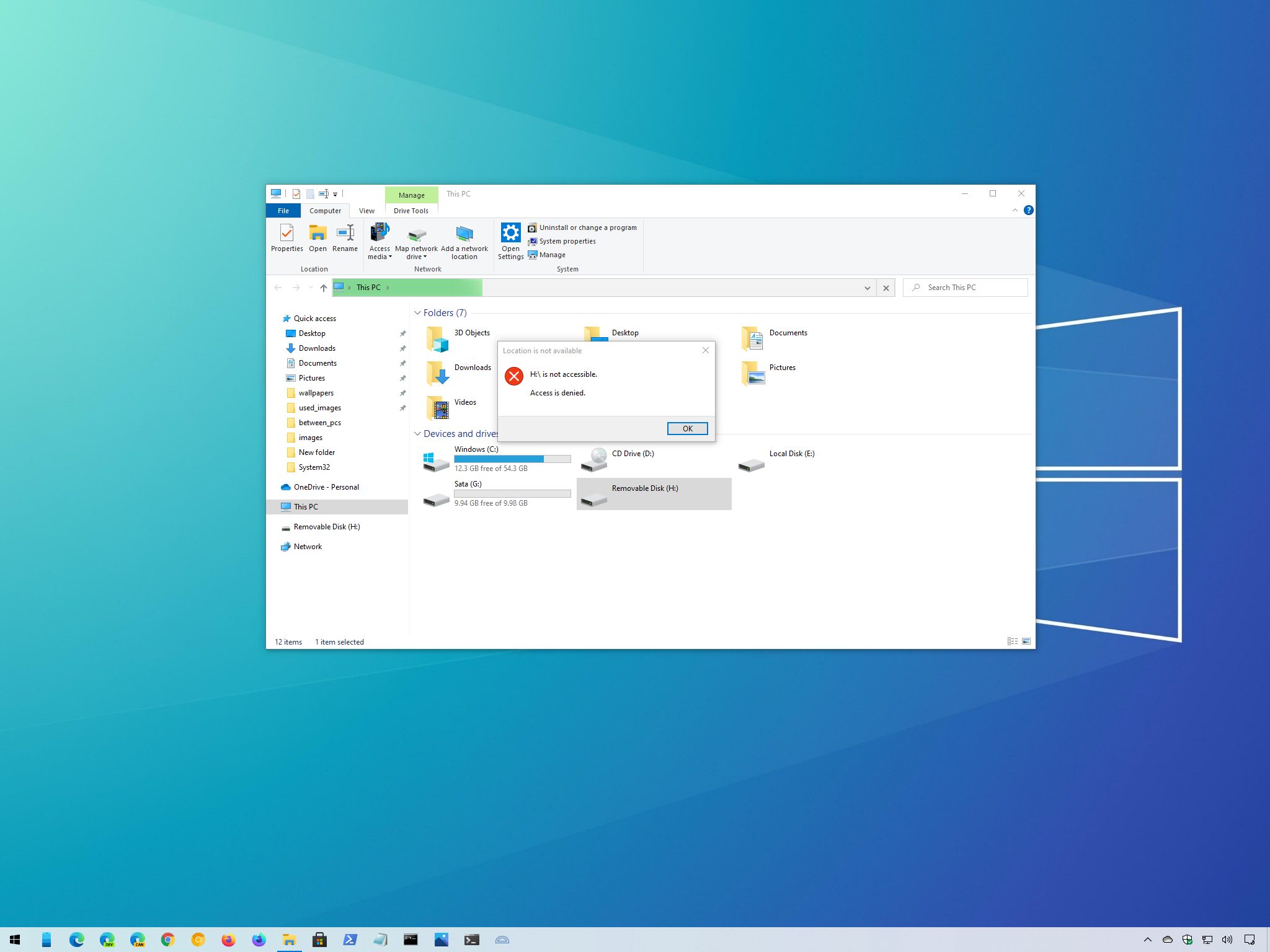
On Windows 10, if a USB or another supported port is available on the computer, users can connect removable storage devices (such as USB flash drives, external hard drives, and other types of mass storage devices) to access or export data.
Although it's a common practice to use removable drives, there are times when you may want to restrict access to these types of devices. For instance, you may want to disable access to prevent users from connecting foreign devices, which may contain malware that can harm the computer or make it more difficult to install applications from unknown sources.
Or if the device stores sensitive data, disabling read and write access to removable storage devices can help lock-down the system to stop users from trying to make a copy of certain information, improving security – even if the data is stored in the network.
Regardless of the reason, Windows 10 includes settings that allow you to disable access to all removable storage devices using the Local Group Policy Editor or Registry.
In this Windows 10 guide, we'll walk you through the steps to disable read and write access for all removable storage device classes.
- How to disable all removable storage access using Group Policy
- How to disable all removable storage access using Registry
How to disable all removable storage access using Group Policy
On Windows 10 Pro (Enterprise or education), the easiest way to prevent users from accessing removable storage is using the Local Group Policy Editor.
To disable removable storage access on Windows 10, use these steps:
All the latest news, reviews, and guides for Windows and Xbox diehards.
- Open Start.
- Search for gpedit.msc and click OK to open the Local Group Policy Editor.
- Browse the following path:
Computer Configuration > Administrative Templates > System > Removable Storage Access - On the right side, double-click the All Removable Storage classes: Deny all access policy.
- Select the Enabled option.
- Click the Apply button.
- Click the OK button.
- Restart your computer.
Once you complete the steps, Windows 10 will deny access to removable storage classes, including USB flash drives, USB external hard drives, physical discs (such as CD and DVD), and other storage that falls into the removable class.
If you change your mind, you can always revert the changes using the same instructions, but on step No. 5, make sure to select the Not Configured option.
How to disable all removable storage access using Registry
Windows 10 Home doesn't include access to the Local Group Policy Editor, but you can achieve the same results by modifying the Registry.
Warning: This is a friendly reminder that editing the Registry is risky, and it can cause irreversible damage to your installation if you don't do it correctly. It's recommended to make a full backup of your PC before proceeding.
To prevent access to all removable storage, use these steps:
- Open Start.
- Search for regedit and click the top result to open the Registry.
- Browse the following path:
HKEY_LOCAL_MACHINE\SOFTWARE\Policies\Microsoft\WindowsQuick tip: On Windows 10, you can now copy and paste the path in the Registry's address bar to quickly jump to the key destination. - Right-click the Windows (folder) key, select the New submenu, and choose the Key option.
- Name the key RemovableStorageDevices and press Enter.
- Right-click the newly created key, select the New submenu, and choose the DWORD (32-bit) Value option.
- Name the key Deny_All and press Enter.
- Double-click the newly created DWORD and set the value from 0 to 1.
- Click the OK button.
- Restart your computer.
After you complete the steps, users will no longer have access to available removable storage devices, nor will they be able to connect external storage drives.
You can always undo the changes using the same instructions outlined above, but on step No. 4, make sure to right-click the RemovableStorageDevices key and select the Delete option. If you have other settings configured inside the key, don't delete it. Instead, double-click the Deny_All DWORD and change the value from 1 to 0.
After undoing the changes using either method, you should regain access to storage devices immediately. However, if this is not the case, then reboot the device to refresh the changes.

Mauro Huculak has been a Windows How-To Expert contributor for WindowsCentral.com for nearly a decade and has over 22 years of combined experience in IT and technical writing. He holds various professional certifications from Microsoft, Cisco, VMware, and CompTIA and has been recognized as a Microsoft MVP for many years.
